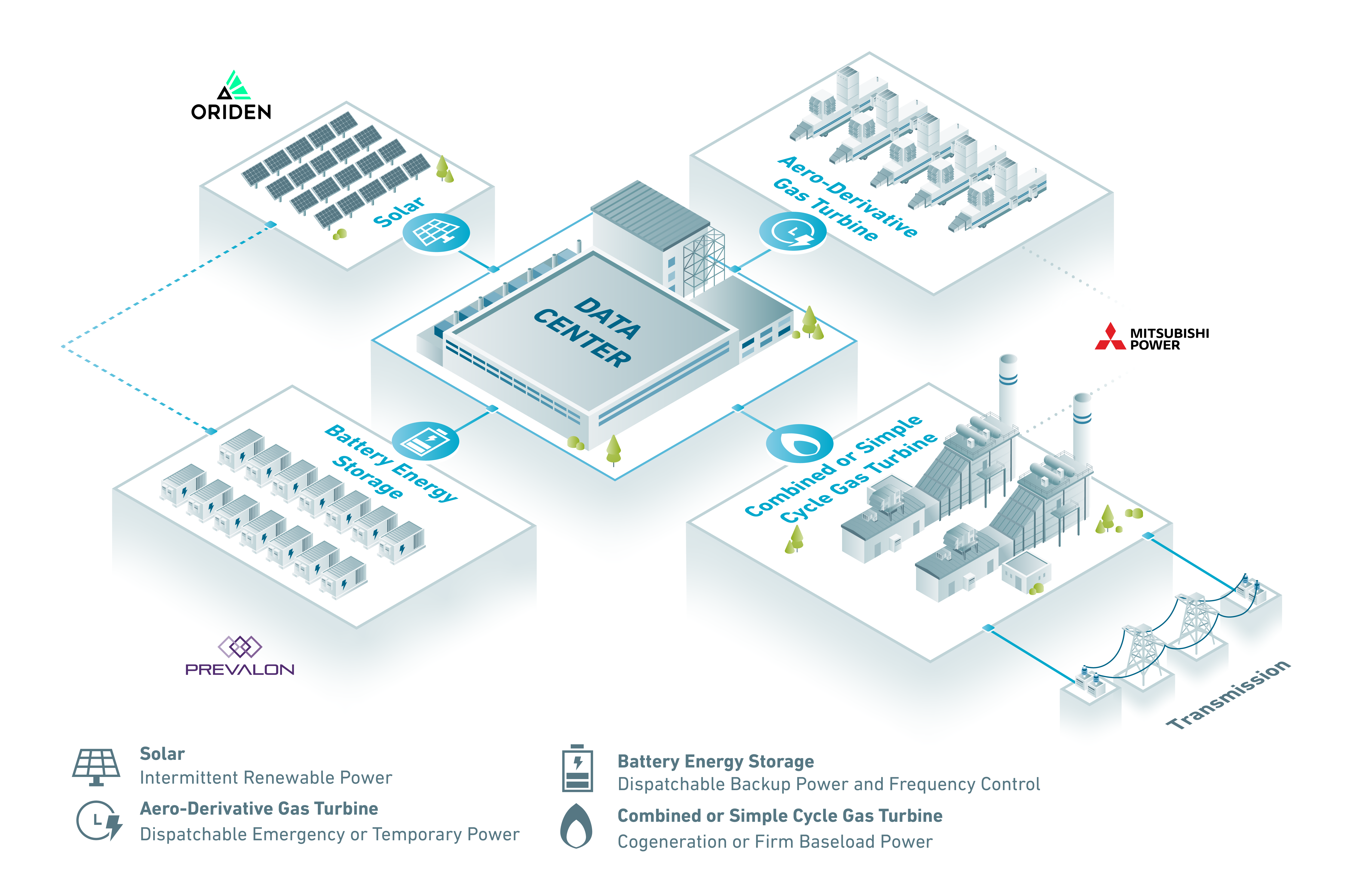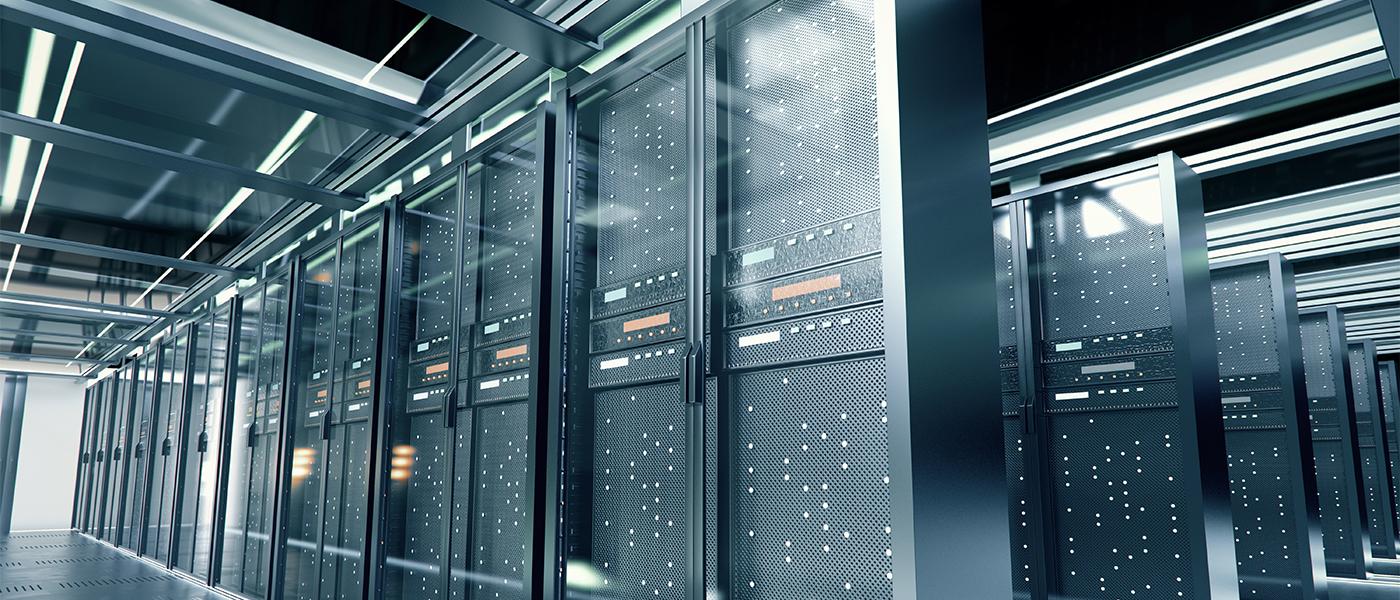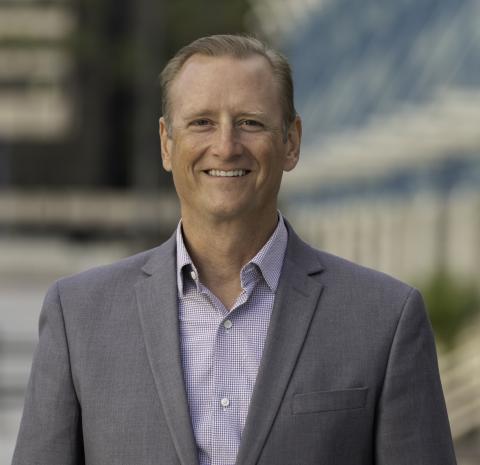
INSIGHTS
Meeting Data Center Demand: Accelerating Reliable, Flexible Power for an AI-Fueled Future

The energy industry has always adapted to cycles of demand, but the current surge—fueled in part by artificial intelligence—feels different, even transformational. More and more, AI is becoming embedded in daily life, reshaping global power needs.
Much like the 1990s browser wars, today’s hyperscalers like OpenAI, Microsoft, and Google are locked in an AI arms race. Scaling large language models hinges on access to reliable, scalable, and increasingly clean power. In an interview with POWER Magazine, Mitsubishi Power CEO Bill Newsom observed that “[w]e’re really at the tip of the iceberg…[Electricity] enables technology advances like AI that can continually improve our daily lives” These incremental life improvements are ones that we often take for granted, but nevertheless increase power demand and strain on the grid.
It’s been established that hyperscale operators are willing to pay for speed, which makes them highly motivated partners for OEMs. However, with supply chain constraints, long interconnection queues, and permitting delays, today they’re looking for power solutions that are both dispatchable and future-proof.
An additional strain on that sense of urgency is that it is now shared, not only across the power sector but across industries generally as AI integration continues to creep into everyday use cases. Utilities, OEMs, and independent power producers face a clear mandate: deliver energy faster than ever, without compromising on resilience, decarbonization, or affordability. Achieving this balance demands innovation, investment, and a collaborative mindset across the energy ecosystem.
Utility and Onsite Power Solutions to Meet Data Center Demand
To meet surging power demand on accelerated timelines, data center developers are now working directly with utilities to determine how quickly power can be brought online. When utility interconnection is available, modern combined cycle gas turbines provide quick and reliable power to meet immediate and long-term needs, offering dispatchable peaking and 24/7 baseload power. Mitsubishi Power is expanding production of its M501JAC Series gas turbines to help utilities meet this demand with predictability, power density, and efficiency. But with interconnection timelines reaching a median of five years, many hyperscalers simply aren’t willing to wait.
In response, many operators are turning to behind-the-meter applications that offer speed, flexibility, and control. Aero-derivative gas turbines often offer a compelling option, as they come in modularized containers and can be quickly deployed. For example, Mitsubishi Power’s 30 MW FT8® MOBILEPAC® units are trailered modules that can begin delivering power within a few weeks of arriving on site, supporting energy arbitrage and mobility between locations. These systems have aided relief efforts in high-demand environments—such as post-earthquake and hurricane recovery in Puerto Rico—and can help maintain uninterrupted operations as data center infrastructure expands rapidly.
Together, these front-of-the-meter and behind-the-meter strategies help ensure high performance while also enabling a more resilient, lower-emission path forward—reinforcing the idea that the power systems we build today must also lay the foundation for tomorrow’s decarbonization.
How Gas Turbines Support the Clean Energy Transition to Net Zero
Even as demand grows, hyperscalers and other customers remain committed to sustainability, putting pressure on utilities to deliver both immediate capacity and a credible path to clean energy. As Newsom described it, “the hyperscalers are going to be the accountability partners for the utilities.”
Fortunately, advances in gas turbine technology have significantly improved efficiency and reduced emissions over time. A modern combined cycle system, for example, can now achieve a Carbon Intensity (CI) score roughly 15% lower than the U.S. national grid average, according to internal calculations.
Modern gas turbines also integrate well with a range of low-carbon technologies, including cogeneration, carbon capture, renewables, low or no-carbon fuels, and battery energy solutions. This flexibility makes them a critical tool for energy planners, capable of meeting immediate demand while supporting longer-term decarbonization.
Sustainable Power and Cooling Strategies for Data Centers
Cooling is one of the most energy-intensive aspects of data center operations, accounting for as much as 40% of a data center’s energy consumption, according to McKinsey. By pairing gas turbines with absorption chillers, operators can generate power and chilled water from a single, integrated system. Using the turbine’s exhaust energy to provide chilling for data center air systems and even chips, this approach boosts overall plant efficiency and lowers the facility’s CI score. Mitsubishi Power has filed a patent for an integrated cycle design that merges power generation and thermal cooling.
In addition to offering chilling benefits, some gas turbines like Mitsubishi Power’s H-25 are 100% hydrogen capable, bridging the gap between reliability and clean energy. In June, we collaborated with Georgia Power to validate 50% hydrogen fuel blending on a retrofitted advanced heavy-duty gas turbine—the first demonstration of its kind in the world.
Integrating Carbon Capture with Gas Infrastructure for Reliable, Low-Carbon Power
As the global push for decarbonization intensifies, carbon capture is emerging as a practical tool. Many developers are now considering pairing gas infrastructure with CCS to strengthen grid reliability while advancing climate goals. When integrated, the solutions can stabilize baseload capacity, enabling greater long-term system resilience.
In 2023, Houston-based Low Carbon Infrastructure, formerly Warwick Carbon Solutions, announced it was building a gas plant with CCS in Decatur, Illinois, targeting capture rates of more than 90%. While CCS requires capital investment, it offers long-term operating returns, especially when integrated from the start.
Projects like this reflect a broader and increasingly vital industry shift: pairing near-term power needs with solutions that secure long-term emissions reductions.
Enhancing Energy System Resilience with Renewables and Battery Storage
Today’s energy system must balance fast-changing demand with intermittent renewable supply. Gas turbines are essential here: their fast starting and ability to change load quickly provide firm capacity when solar or wind resources are unavailable. Some hyperscalers are already contracting with renewable energy developers to purchase green energy to offset the carbon emissions associated with accessing power at short notice.
Battery energy storage systems (BESS) further highlight the flexibility of gas turbines. When demand is low, turbines can charge BESS solutions. When demand spikes, that stored energy can be dispatched almost instantly. This is especially valuable for data centers, as large language models can cause sudden, substantial load shifts.
Integrated turbine-storage systems act as a buffer—ensuring operational stability and the power hyperscalers need to scale on demand, without sacrificing momentum toward decarbonization.
Meeting Growing Data Center Power Demand with Scalable, Sustainable Solutions
I’ve seen the industry reinvent itself many times throughout my more than three decades in energy.. But the current moment stands apart. Driven in part by the rise of AI and digital technologies, we’re entering a new era of demand, one that may surge faster, spike higher, and shift more unexpectedly than anything the grid has handled before. For power producers, that volatility raises the bar on flexibility, risk awareness, and system readiness.
Meeting this moment will require action on several fronts:
• Securing supply chains
• Overcoming legacy permitting and regulatory processes
• Addressing labor and skills shortages
• Partnering early and closely with hyperscalers to deliver tailored, efficient solutions
The decisions made in the next two to five years will shape the next two to five decades. Navigating this transition demands collaboration, adaptability, and a shared commitment to both reliability and sustainability. By confronting these challenges together, the industry can ensure that data centers—and the power systems behind them—are equipped to thrive in a digital, low-carbon future.
Want to dive deeper? Discover our latest innovations and system capabilities on our Data Center Solutions page.
Peter Sawicki is Vice President, Business Development of Emerging Technologies, Mitsubishi Power.
++
Data centers need power that is reliable, sustainable, and scalable. Mitsubishi Power delivers energy solutions designed to meet the demands of the AI era.




